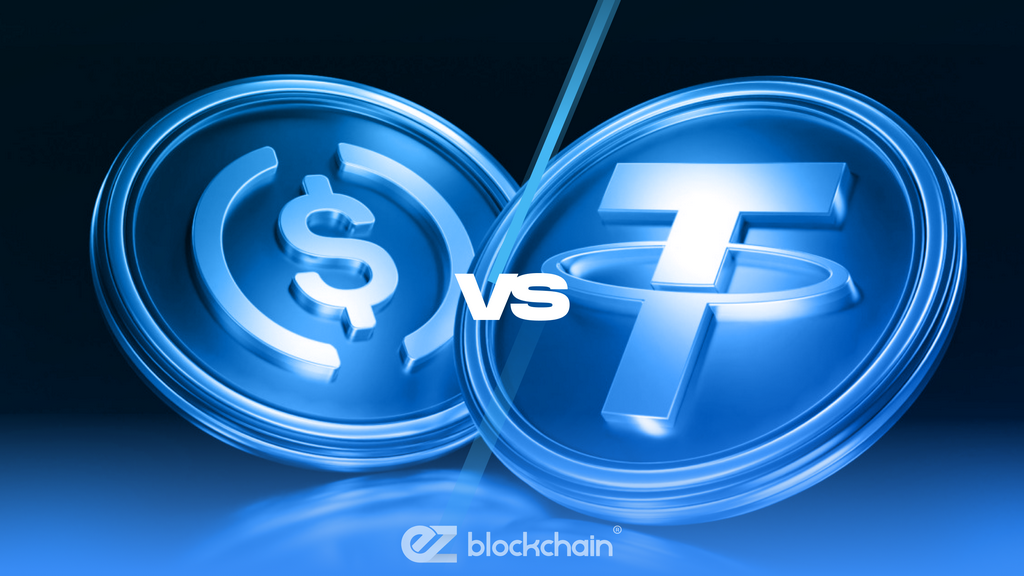Stay up to date with the latest news, announcements, and articles.
It has also become much easier to mine and actually acquire the coins, thanks to ASICs and mining hostings and clouds. All of that turns immense attention towards Bitcoin, launching a fresh new hype bandwagon. But a big question arises — isn’t Bitcoin’s total generated supply capped at twenty-one million? So, when will all Bitcoin be mined down to the last bit?
This article dives into the BTC mechanisms to try and explain what happens once its supply goes past its cap.

Total Bitcoin Supply and the 21 Million Cap
The pressing question of remaining bitcoins is due to the underlying cap mechanism: the Bitcoin’s crypto network was created with the intended fixed maximum supply in mind. The twenty-one million cap was the decision of Satoshi Nakamoto, which resulted from calculations combined with some educated “guesswork” of the BTC’s creator himself.
The cap was ever since hardcoded into the BTC protocol and put at the core of the consensus mechanism (all parties must agree on and validate any monetary policies and alterations to the BTC network consensually). As such, the cap is not only a promise of scarcity and trading value — it is one of the core regulators of the entire platform.
This brings us to another inquiry — with the BTC remaining in circulation for over fifteen years now, how much Bitcoin has been mined in total? More importantly, how many Bitcoins are left to mine for today’s and future miner generations?
To clarify:
- About 93% of the entire BTC supply has been mined out as of mid-2025
- Roughly 19.6 million BTC are currently in circulation
- That leaves fewer than 1.5 million BTC yet to be mined
Yes, the supply is running out. But things are not as urgent as they seem, thanks to Bitcoin’s halving schedule and new issuance rates slowed down on a regular basis. So, when will Bitcoin be mined out completely, and what happens then? To understand that and envision some realistic scenarios, we must first recall the principles of the Bitcoin platform itself.
How Bitcoin Mining Works
The primary way to acquire, monetize, and leverage BTC in other ways is to mine it. Bitcoin mining is the alpha and omega of the Bitcoin ledger. It is tightly knit with the Proof-of-Work consensus mechanism and sets in motion other two fundamentals of decentralization:
- On-chain transaction validations
- Generation and introduction of new bitcoins into circulation
The PoW consensus enables a competitive principle, where miners compete to solve hash-based cryptographic puzzles by dedicating their hashrate power to the BTC network. This is called hashing — the solution to the problem is a valid hash under a certain threshold. By finding it and solving the puzzle, a miner helps the network to bundle pending transactions into “blocks.”
Each new block is then added to the BTC blockchain, expanding the Bitcoin circulation, and the miner gets rewarded with the freshly minted BTC for helping keep the network alive and growing. They also get transaction fees tied to specific transactions.
Role of ASICs and mining difficulty
Just recently, the mass adoption of crypto mining has sped up dramatically, with the advent of ASICs — specialized all-in-one machines pre-optimized for solo, small-scale, or modular mining. As opposed to custom farms or improvised GPU or CPU-based systems of the past, ASICs don’t require much expertise and can be used right after the purchase and set up.
This makes you wonder — With faster miners, does the supply run out faster too? So when will the last BTC be mined with that information in mind? Yes, the miners do become higher in performance and hashrate capacity. But Satoshi Nakamoto planned for this as well. Namely, with mining difficulty, issuance schedules, and halvings.
- The difficulty of cryptographic puzzles adjusts roughly every 2,016 blocks (about every two weeks) to maintain an average block time of about 10 minutes, regardless of how many miners join the network.
- New issuance of Bitcoin happens under a strict schedule encoded in the protocol and miners receive fixed rewards per block (e.g., it was 50 BTC per block when Bitcoin first launched in 2009).
- The size of the fixed reward per block is halved roughly every 210,000 blocks (about once in four years).
The halving events reduce how many new bitcoins are issued per block over time, gradually curbing inflation. Over time, with each halving, the flow of new BTC into circulation slows. Combined with the cap of twenty-one million total coins possible, this supply schedule maintains scarcity by default.

Why Reaching 93% Mined Is Significant
As of today, a large portion of the discussed twenty-one million BTC is already mined out. Naturally, any future issuances will be smaller. All the remaining BTC supply will also be harder and slower to mine. In light of this, miners are expected to increasingly rely on transaction fees for income, rather than mining itself.
Mining out approximately 93% of all existing Bitcoin is a real milestone and phase transition in the BTC’s economic model. Scarcity becomes more pronounced. But we still have decades ahead, before BTC rewards minimize, all of which will be influencing global market dynamics in major ways.
Impact on Bitcoin Price and Market Dynamics
The top three consequences of BTC’s supply shrinking are:
- Bitcoin supply will become more illiquid and there would be less sense to hold coins long-term, which should stimulate valuation shifts and trading activity.
- BTC’s price movements will become even sharper, with upward/downward cost spikes happening more often and liquidity premiums growing accordingly.
- More macroeconomic influence is expected for Bitcoin due to its potential role as an inflation-hedging asset.
What Happens When All Bitcoin Is Mined?
Let’s now try and consider some post-supply scenarios for BTC.
End of block rewards
When will all the Bitcoin be mined exactly? Around the year 2,140. Once that happens, the reward subsidy per each block will decay to zero thanks to halving events. No new bitcoins will be used via block rewards, effectively stopping any revenue streams from new coin issuance.
Reliance on transaction fees
As an alternative, all the remaining miners will depend entirely on transaction fees that users pay in order to validate and include transactions in new blocks. As network activity grows, and as more people or applications want transactions confirmed (especially during times of congestion), demand for limited block space will rise. If the fees grow, the community will be well incentivized to stay active.
Long-term market stability
Bitcoin becomes progressively more scarce, which tends to push it toward being a deflationary asset (or at least one for minimizing inflation). Also, because some BTC are lost forever due to lost private keys or inaccessible wallets, the effective circulating supply may be materially less than the theoretical cap. Long-term stability then depends heavily on continued demand, strong adoption, and secure, incentivizing infrastructure.
Challenges and Opportunities for Miners
As the BTC supply shrinks, the community of miners gets both the challenges to overcome and the new opportunities to leverage.
The top two expected challenges include:
- Profitability squeeze
As fewer new BTC are issued, miners must do more work, which means higher energy use for less reward. If Bitcoin’s price or transaction fees don’t rise enough to offset that drop, many miners may struggle to stay profitable.
- Network stability risks
A drop in miner participation could reduce the network’s hashrate, which frees room for like 51% of all network attacks and may slow transaction validation.
As for the opportunities, we get:
- Efficiency and energy optimization
Upgrading to more efficient hardware, cheaper or renewable energy, and scaling the entire operation can lower cost per BTC mined.
- Diversified revenue streams
Some miners are exploring additional uses for their infrastructure—renting out computing power for AI/data center tasks, participating in cloud computing, or other side businesses that leverage their hardware. This helps offset shrinking income from block rewards.

Implications for Investors and Traders
Last but not least, what should active BTC investors and traders expect?
- The Long-term holders or HODLers may benefit from scarcity and new value perception. The “ancient supply” (Bitcoin held by addresses for many years) is increasing, so the scarcity becomes more visible and credible in market dynamics. Investors who hold through cycles may see price gains and over higher value appreciation.
- Traders should expect pronounced volatility during and around halving events. Research indicates that price may be “priced in” before the halving, our returns spike near the event, transaction fees sometimes rise, and miner revenue becomes more sensitive.
As for some major strategic shifts that both camps can expect, we are looking at the following:
- Portfolio allocation may shift further toward longer-term holding of Bitcoin, expecting scarcity and rising adoption to drive returns.
- Diversification may matter more — Bitcoin’s exposure can be combined with other assets to hedge periods of fee shocks or volatility.
- Monitoring network fundamentals (like hash rate, difficulty, miner health, on-chain activity, etc.) will become more important. For example, observing fees, on-chain liquidity, and the illiquid supply can be crucial indicators.
To sum up, when will the last Bitcoin be mined? Not too soon, like in a hundred years. How many Bitcoin have been mined? Not enough to make mining unprofitable yet. And how many bitcoins are left to mine? Just enough for ambitious cryptocurrency enthusiasts to profit off.Looking for a way to jump in and start mining? Contact EZ Blockchain for consultation, tech assistance, and cost-efficient hosting for fast mining journey kick-off.
Fill out a form and our bitcoin mining expert will contact you.
FREE CONSULTATIONchoose
a miner
profit and
understand data?
business remotely
with EZ Blockchain?
Fill out a form and our bitcoin mining expert will contact you.









